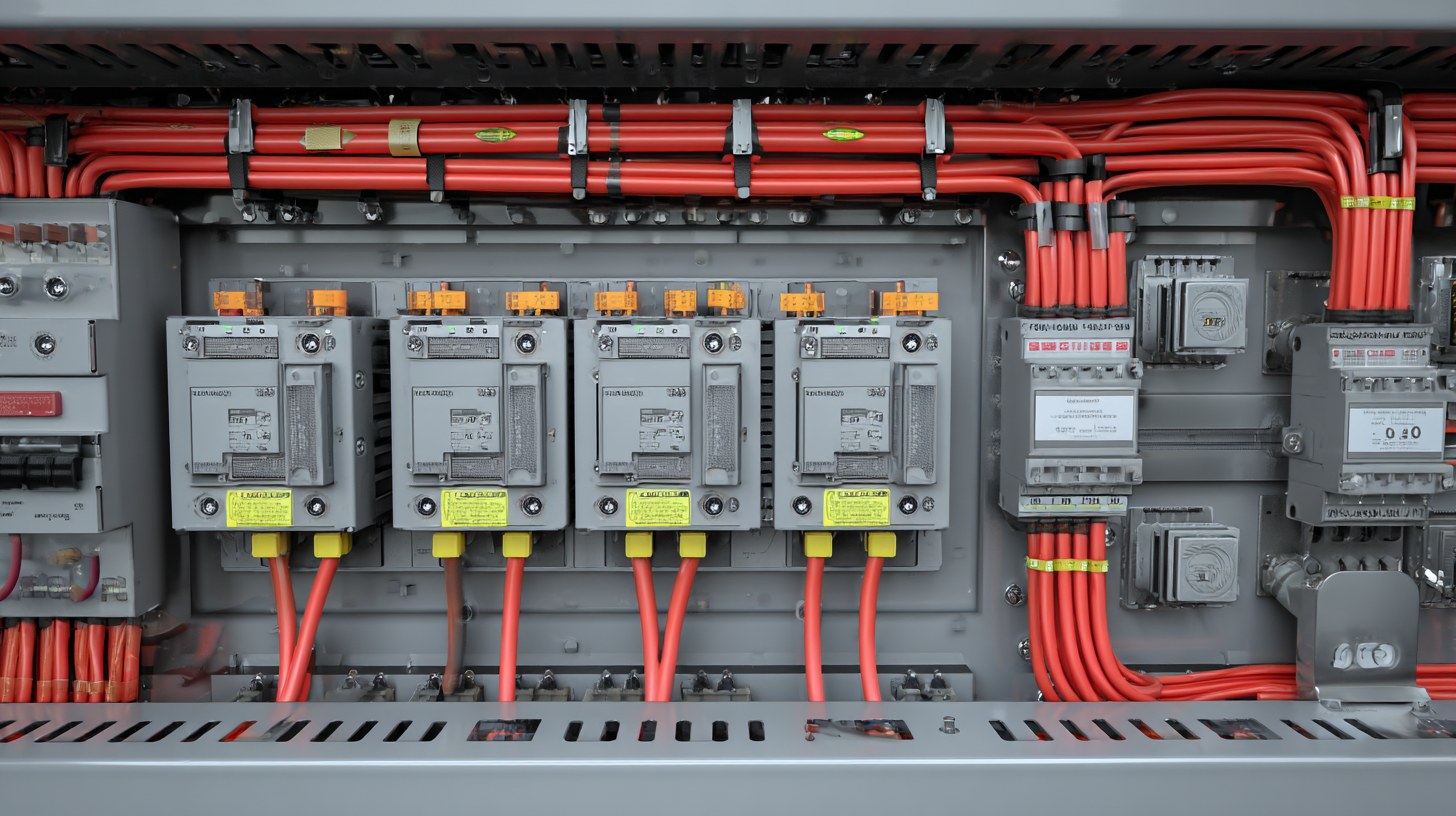Leave Your Message
-
Phone
-
E-mail
-
Whatsapp
-
Whatsapp


In the rapidly evolving landscape of the electrical industry, Bus Ducts have emerged as a critical component for efficient power distribution. According to a report by Market Research Future, the global bus duct market is projected to grow at a CAGR of 6.5% between 2020 and 2026, highlighting the increasing demand for reliable and efficient power systems.
 Bus Ducts in Electrical applications not only enhance operational efficiency but also contribute to improved safety standards, making them indispensable in large-scale setups such as commercial buildings and industrial facilities. As organizations strive to optimize their power distribution networks, understanding the various types of bus ducts available—including their advantages and applications—becomes essential.
This blog aims to provide a A Comprehensive Comparison of the leading bus ducts in the electrical industry, shedding light on why these systems are crucial for modern electrical infrastructure.
Bus Ducts in Electrical applications not only enhance operational efficiency but also contribute to improved safety standards, making them indispensable in large-scale setups such as commercial buildings and industrial facilities. As organizations strive to optimize their power distribution networks, understanding the various types of bus ducts available—including their advantages and applications—becomes essential.
This blog aims to provide a A Comprehensive Comparison of the leading bus ducts in the electrical industry, shedding light on why these systems are crucial for modern electrical infrastructure.
The bus duct market is poised for significant changes by 2025, driven by key trends that reflect both technological advancements and evolving infrastructure needs. According to a recent report by Research and Markets, the global bus duct market is expected to reach approximately $4.5 billion by 2025, with a CAGR of around 5% from 2020. This growth is largely fueled by the increasing demand for energy-efficient solutions and the rise of renewable energy sources, prompting industries to adopt more flexible and adaptable electrical distribution systems.
One notable trend influencing this market is the integration of digital technology into bus duct systems. The introduction of smart bus ducts that utilize IoT (Internet of Things) capabilities is transforming how organizations monitor and manage their electrical distribution. These systems enable real-time data collection and enhanced predictive maintenance, which can significantly reduce downtime and operational costs. Furthermore, the growing focus on sustainability and compliance with stringent environmental regulations is driving manufacturers to develop eco-friendly materials and efficient designs that minimize energy loss. This merging of innovation and sustainability will be vital for players aiming to stay competitive in the rapidly evolving landscape of the electrical industry.
When it comes to bus ducts in the electrical industry, the choice of manufacturer can significantly impact system performance and efficiency. Among the top players in this market, five manufacturers consistently stand out due to their innovative designs, robust performance, and comprehensive service offerings. These leaders are setting the benchmarks that drive industry standards and customer satisfaction.
One of the noteworthy names is Schneider Electric, renowned for its commitment to sustainability and energy efficiency. Their bus duct systems are designed to reduce energy losses while ensuring high reliability. Another prominent manufacturer, Siemens, offers advanced technology integration, which enhances operational flexibility and monitoring capabilities. ABB, known for its cutting-edge solutions, provides innovative bus duct designs that optimize space and improve safety in electrical installations. Meanwhile, Eaton is recognized for its focus on durability and ease of installation, catering to diverse industrial needs. Finally, GE's dedication to research and development leads to high-quality, performance-driven products that meet the evolving demands of the electrical sector. Together, these manufacturers are shaping the future of bus duct systems, making them crucial partners in the electrical industry's growth and evolution.

Innovative technologies are shaping the landscape of bus duct designs, enhancing efficiency and reliability within the electrical industry. Recent industry reports indicate that bus duct systems can achieve up to 30% higher efficiency compared to traditional cabling solutions due to their reduced electrical losses and superior thermal management. This efficiency is primarily driven by advanced materials and innovative design methodologies that minimize resistance and heat generation.
Moreover, the integration of smart technologies into bus duct systems is revolutionizing operational management. For instance, the deployment of real-time monitoring systems allows for predictive maintenance and optimized energy use. According to a market analysis by Research and Markets, the global bus duct market is expected to grow significantly, reaching USD 2.4 billion by 2025, largely attributed to these technological advancements. Enhanced insulation materials and modular designs also contribute to increased flexibility and scalability, making modern bus ducts adaptable for a variety of industrial applications while maintaining high-performance standards.

When it comes to choosing bus ducts for electrical systems, the debate between aluminum and copper options is pivotal.
Aluminum bus ducts are often favored for their lightweight properties and cost-effectiveness. They are easier to handle and install, making them a practical choice for many applications.
Additionally, aluminum offers good corrosion resistance, especially in humid environments, which can prolong the lifespan of the installation.
On the other hand, copper bus ducts are renowned for their superior conductivity and durability. Copper has a lower electrical resistance compared to aluminum, allowing for more efficient power transmission. This is particularly beneficial in high-performance electrical systems where minimizing energy loss is critical. However, the higher cost and heavier weight of copper can be drawbacks, making it essential to consider the specific requirements of the installation before making a decision. Ultimately, the choice between aluminum and copper bus ducts hinges on factors such as
budget constraints, performance needs, and environmental considerations.
When it comes to selecting the right bus duct for your electrical system, several best practices can guide you in making an informed choice. First and foremost, assess your specific power requirements. Understanding the maximum current load, voltage levels, and the layout of your electrical network is crucial. This information will help you determine the appropriate size and type of bus duct that can safely accommodate your operational needs without compromising efficiency.
Next, consider the environmental conditions where the bus duct will be installed. Factors such as temperature fluctuations, humidity, and the presence of corrosive substances can affect the material selection for your bus duct. For instance, if the installation is in a harsh environment, opting for aluminum or copper bus ducts with protective coatings may enhance longevity and performance. Additionally, ensure that the bus duct adheres to industry standards and local regulations, as this ensures safety and reliability in your electrical infrastructure.
| Bus Duct Type | Current Rating (A) | Material | Temperature Rating (°C) | Application | Installation Ease |
|---|---|---|---|---|---|
| Standard Aluminum | 1600 | Aluminum | 90 | Industrial | Easy |
| Insulated Copper | 2000 | Copper | 85 | Commercial | Moderate |
| Heavy-Duty Steel | 3000 | Steel | 100 | Heavy Industry | Challenging |
| Compact Bus Duct | 1200 | Aluminum | 75 | Tight Spaces | Easy |
